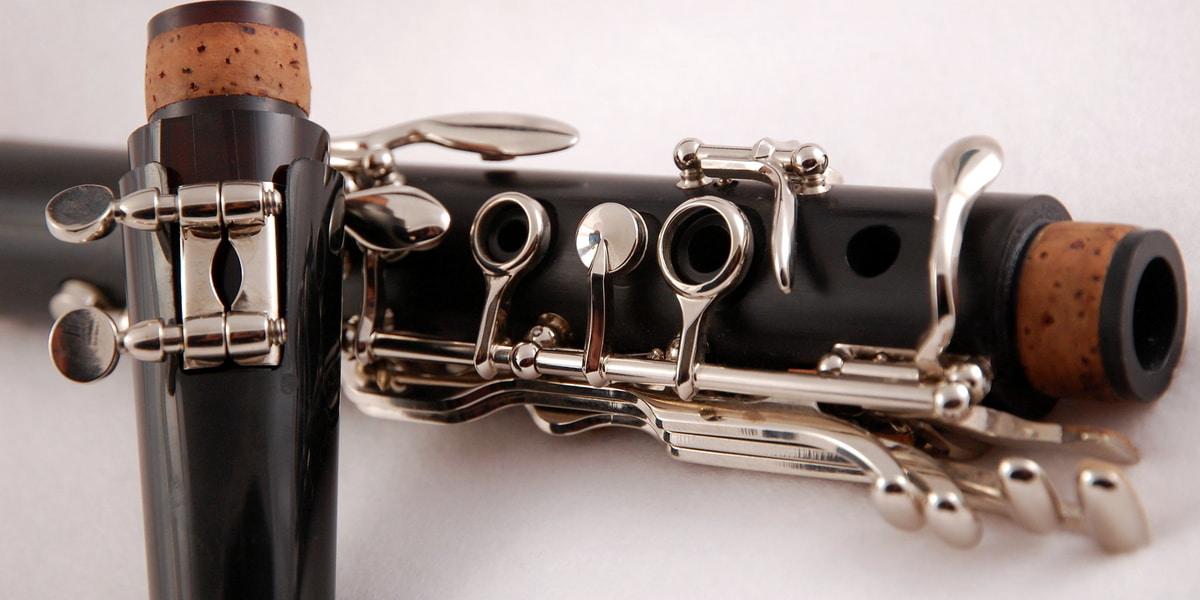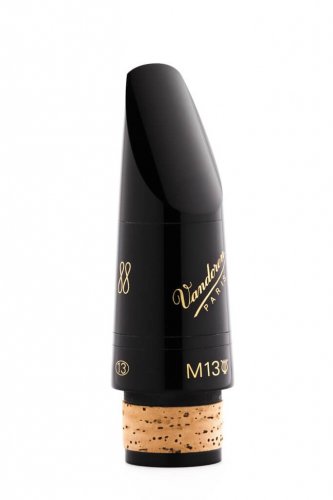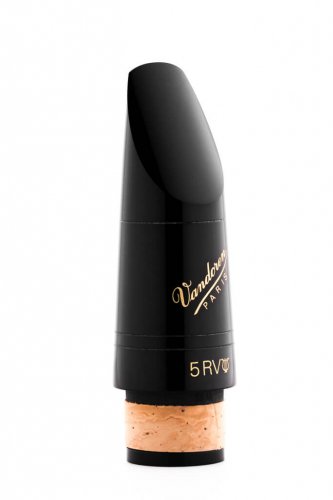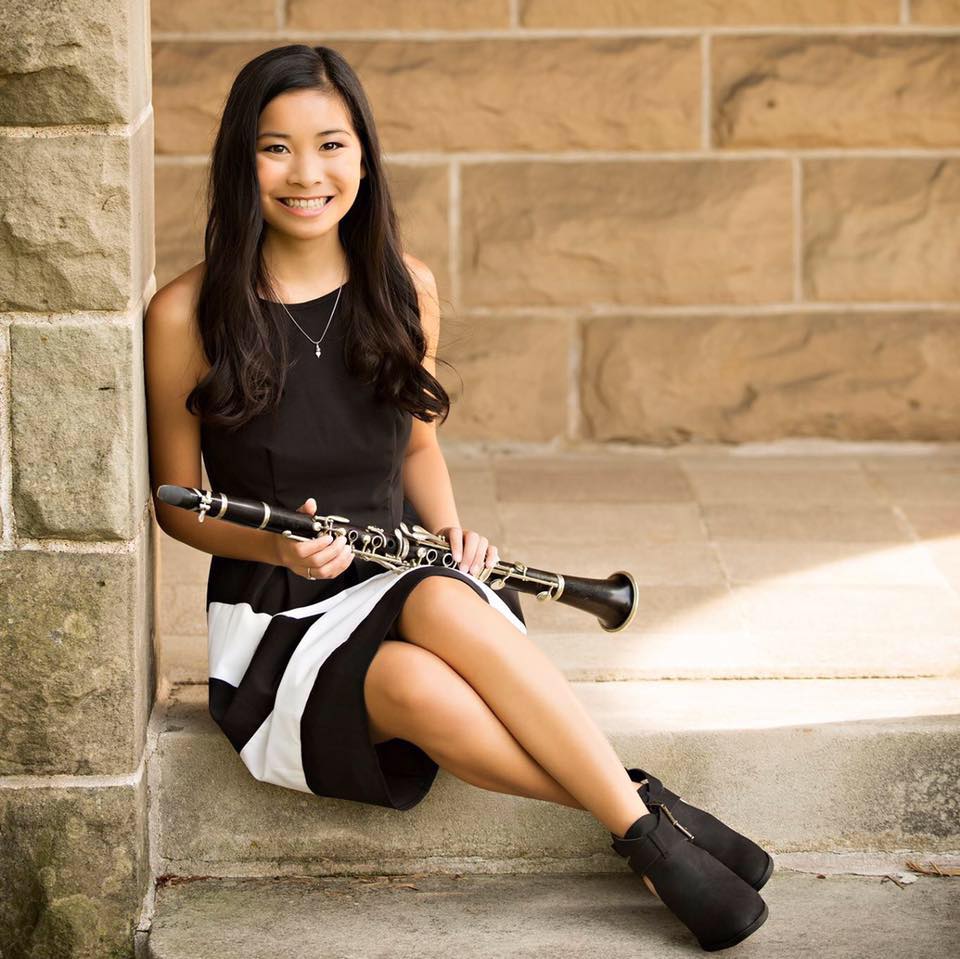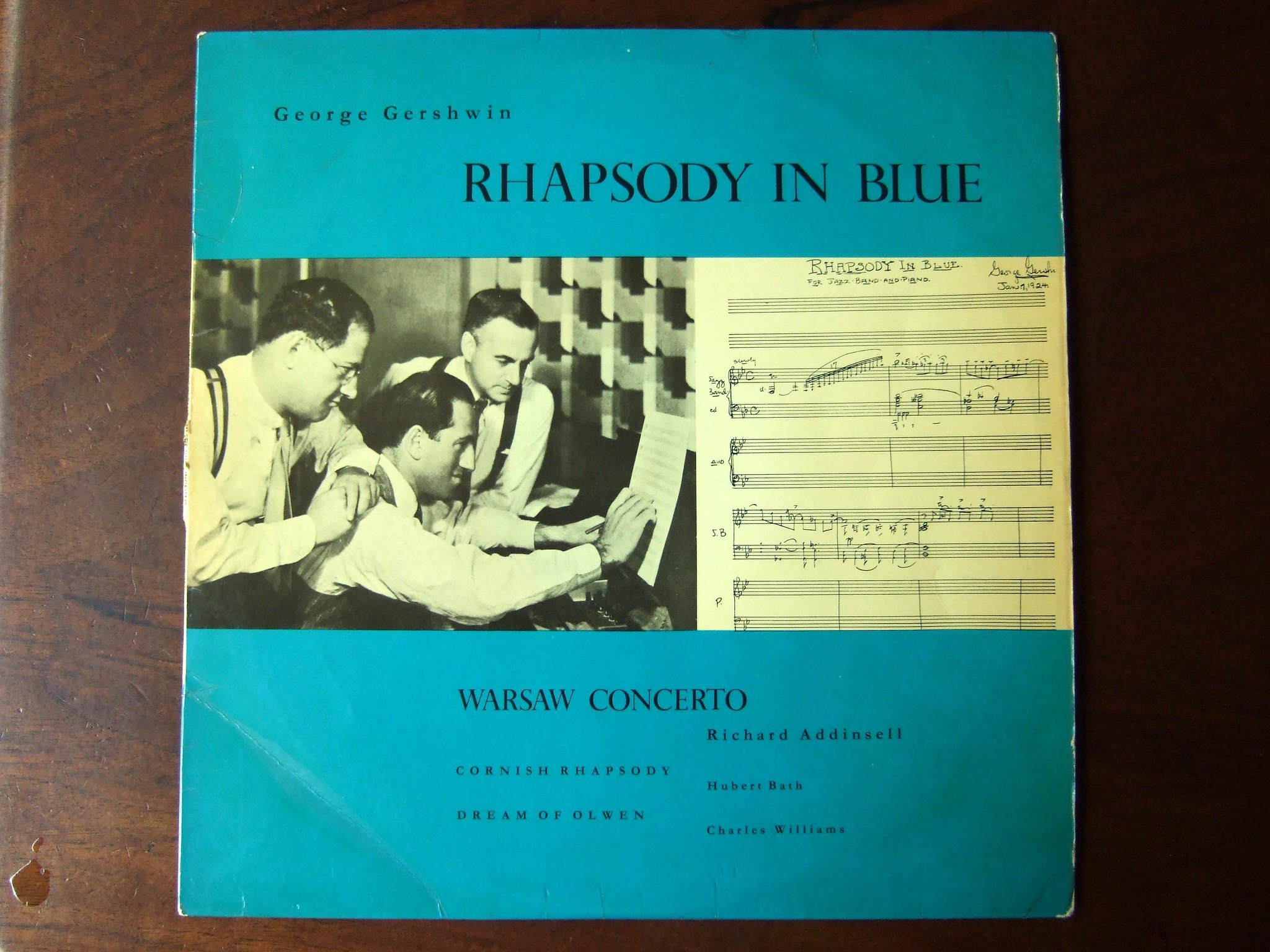Purchasing a quality mouthpiece is a very necessary step in a clarinetist's journey. The mouthpiece is the piece of the clarinet that forms the sound. A quality mouthpiece is necessary for clarinetists because it allows them to further express their sound to their full potential. Ulysse Delécluse, a famous clarinet professor from a Paris conservatory, states "whatever the level of musicians, they could not afford to play with a second-rate mouthpiece".
Vandoren is a very reliable company that has a variety of mouthpieces to fit many clarinetist's skill levels and tastes. I started on my first Vandoren mouthpiece in middle school. My first Vandoren mouthpiece was the M30. My private clarinet instructor recommended that I purchase a Vandoren clarinet mouthpiece because it would offer me a better sound as a beginner student. The Vandoren M30 stayed tried and true throughout middle school and high school band. The summer before my Junior year of college, I switched to the Vandoren M13 Lyre. The Vandoren mouthpieces have enhanced my sound greatly throughout my musical journey.
First, I will discuss mouthpiece anatomy and mouthpiece material information that will be useful when learning about new Vandoren mouthpieces. Next, I will list and describe each Vandoren mouthpiece. Some will have links to useful videos that show and explain the mouthpiece. Lastly, I will go over the evaluation process when finding a Vandoren mouthpiece you may like.
Expert Advice
Choosing a new clarinet mouthpiece is a unique journey for every clarinetist. There are a lot of factors that go into purchasing a new clarinet mouthpiece. The first is physical makeup. Every clarinetist has a different jaw, teeth structure, oral cavity, and size of their lips and mouth. When choosing a new clarinet mouthpiece, choose one that is comfortable and does not cause pain in any of those areas. The Vandoren company has done an amazing job in creating a variety of different mouthpiece structures that will be comfortable for different clarinetists.
When looking at new clarinet mouthpiece, make sure you know the basics of the mouthpiece you are already playing on. What features of your current mouthpiece do you like and dislike? This will help you narrow down the options for new mouthpieces.
Find a mouthpiece that will give you the sound and response that you want. From there, find the reeds to compliment the mouthpiece.
The most expensive mouthpiece does not mean it's a mouthpiece for only advanced clarinetists. For example, I am on my 11th year of playing the clarinet and I play on a Vandoren M13 Lyre. This mouthpiece is a mouthpiece that is used by professionals, but also beginner to intermediate players. The M13 Lyre mouthpiece produces a sound that I really enjoy and it is comfortable for me to play on, even though it's not the most expensive and fancy mouthpiece on the market.
Clarinet Mouthpiece Anatomy
When researching and purchasing a new mouthpiece, it is important to know and understand clarinet mouthpiece anatomy. Below, I have listed and defined important mouthpiece anatomy vocabulary that will be helpful to you when choosing a new mouthpiece.
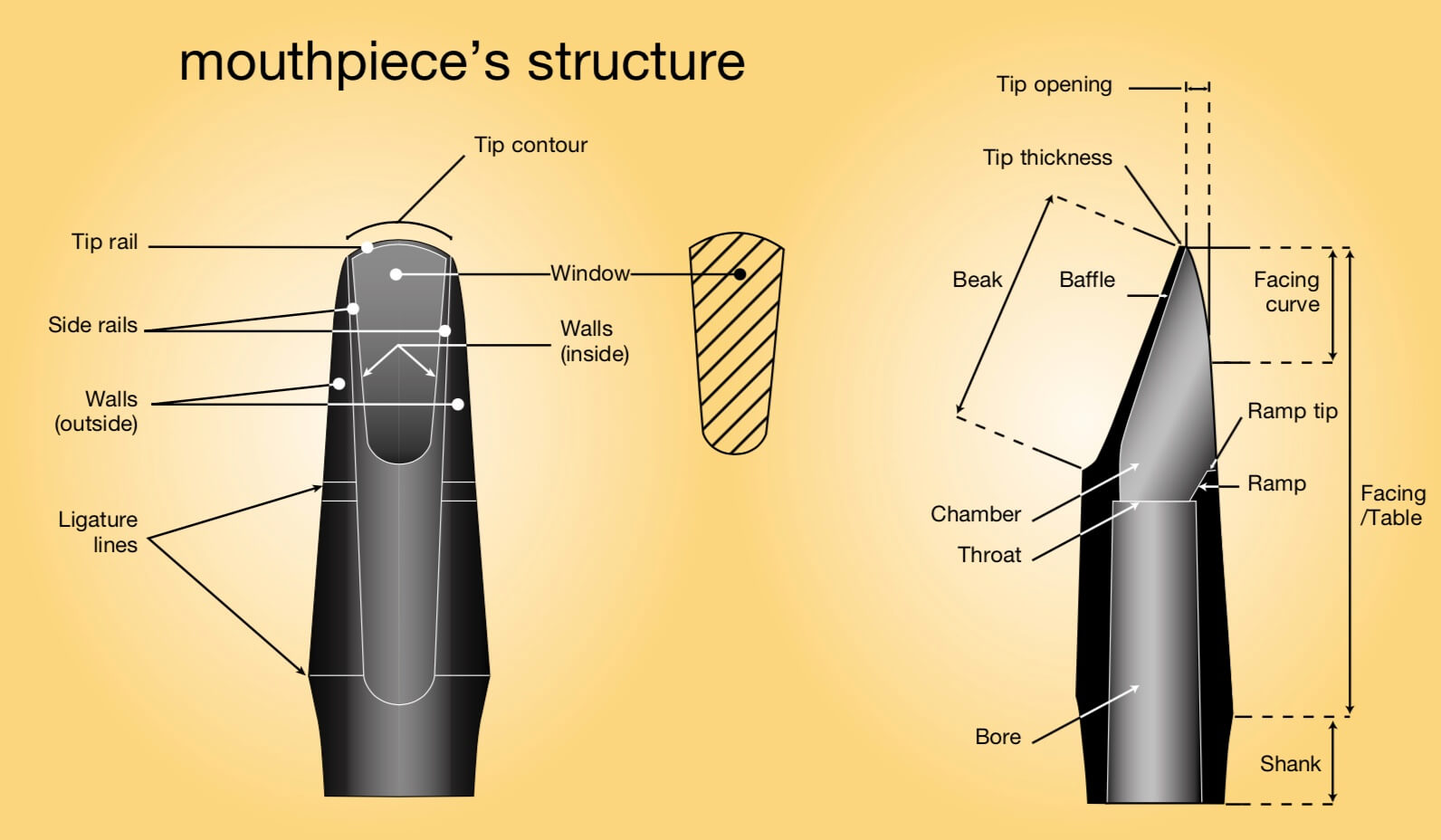
Tip Opening
The tip opening is the distance between the mouthpiece tip and the reed. In other words, it is how much curve there is at the tip of the mouthpiece. Mouthpieces with a wider, more curved tip opening will respond better with softer reeds. Mouthpieces with a narrow, less curved tip opening will respond better with harder reeds.
Tip openings that are smaller than 110 are less resistant, very focused in sound and require stronger reeds. Tip openings that are larger than 110 are more resistant, round in sound and require softer reeds.
Tip rail
The tip rail is the very tip of the mouthpiece. This area is where the reed seals with the mouthpiece while vibrating. The thickness of the tip rail determines the response of the mouthpiece.
Facing
The facing is the part of the mouthpiece where the reed is placed. There are two parts to the facing. There is the flat facing and the curved facing. The general rule is the longer the facing, the smaller the tip and vice versa. The facing and tip relationship controls many other factors listed below.
Open tip and short facing: high resistance, great flexibility and soft reed strength.
Medium tip and medium facing: medium resistance, medium flexibility and medium reed strength.
Advanced tip and long facing: low resistance, little flexibility and hard reed strength.
Facing Length
The facing length is the point where the reed separates from the mouthpiece table. Short facing is where the reed separates from the table near the tip. Medium facing is where the reed separates from the table slightly further back. Long facing is where the reed separates slightly farther back than the medium facing.
Long facing correlates well with stronger reeds and short facing correlates well with softer reeds.
Chamber
The chamber is the part where the sound is formed. The chamber also receives the pressure of air directly from the mouth. Larger chambers have a more full and flexible sound, whereas smaller chambers have a greater focus, but smaller dynamic range.
Baffle
The baffle directs the air into the mouthpiece's chamber. It has the most effect on the sound. Higher baffles provide a brighter sound, whereas scooped baffles provide a darker sound.
Throat/"Trapeze"
The trapeze focuses airstream into the bore.
Bore
Transfers the air from the mouthpiece into the rest of the instrument. The length of the bore affects the pitch.
It is recommended that beginners choose a mouthpiece with a medium tip opening, medium facing length and tip opening of 110. 2.5-3.5 reeds will work really well with those combinations. As the clarinetists advance, they can start looking for mouthpieces that have specific tonal or response characteristics.
Traditional vs. Profile 88 Beak models
In the following descriptions, you will see that there are different models that the mouthpieces come in. First, let's talk about Traditional beaks vs. Profile 88 beaks. The only difference between the Traditional beak and Profile 88 beak is the exterior angle. The Profile 88 beak has a more closed-angled beak compared to the Traditional beak. Vandoren created two different beaks in order to adapt to the different levels of comfort when playing. When choosing between the two models, take the following aspects into consideration: playing position/posture, sound projection, playing comfort, control and precise articulation.
Series 13
Vandoren created Series 13 mouthpieces specifically for American clarinetists. These mouthpieces are pitched at A440. In American music, 440Hz has been the tuning standard. The A above middle C is tuned to a frequency of 440Hz and has therefore been established as the standard tuning pitch for all instruments. The Series 13 mouthpieces will help the instrument play better in tune, but make sure that you also have a corresponding barrel with the mouthpiece.
Mouthpiece Materials
Soft mouthpiece material provides a darker sound, but less projective sound. Harder mouthpiece material provides a bright sound, as well as good projection.
Ebony (Hard Rubber) mouthpieces offer warm and focused sound. Ebonite is the recommended material for classical clarinetists.
Crystal mouthpieces have great projection and a bright sound. This material is great for jazz and outdoor performances where projection is necessary.
Wood mouthpieces are rarely used. The sound of a wood mouthpiece is extremely warm. However, it does not project very well and is less stable.
Vandoren Mouthpieces
M13
The M13 mouthpiece has the narrowest tip opening mouthpiece in the Vandoren range. The M13 mouthpiece has a long facing, slightly bigger chamber, hollow baffle and a wide bore. The tip opening of the M13 is 100.5. All of these features allow the mouthpiece to create a brilliant, rich and colorful sound. The mouthpiece also has a quick and precise response. The M13 mouthpiece is only offered in one model: 13 Series with Profile 88 beak.
M13 Lyre
The M13 Lyre has similar qualities as the M13 mouthpiece. The M13 Lyre has a medium-long facing length which provides a very pure sound. The M13 Lyre is more open. The tip opening is 102. The higher registers of the clarinet are easier to play on the M13 Lyre. The M13 Lyre provides a more darker sound than the M13. The M13 Lyre mouthpiece is only offered in one model: 13 Series with Profile 88 beak.
M15
The M15 mouthpiece is a fairly closed mouthpiece. The M15 has a long facing length and a tip opening of 103.5. The M15 mouthpiece provides the clarinetist with deep sounds, rich harmonies and great flexibility that allows the musician to use expressiveness. It has a large spectrum of colorful sound. The M15 also allows for great articulation and response. It is recommended that stronger reeds are played with the M15 mouthpiece. The M15 mouthpiece is designed in two pitches. The M15, the traditional mouthpiece, is tuned at 442Hz. The M15 13 Series has an optimized bore, so it is pitched at 440Hz. The M15 mouthpiece is offered in three different models: 13 series with Profile 88 beak, Profile 88 beak and Traditional Beak.
M30
The M30 mouthpiece is a popular mouthpiece across all genres of music. The M30 mouthpiece has a long facing length and a tip opening of 115. The M30 mouthpiece is a great mouthpiece for jazz, classical and/or as a double between the two genres. The long facing of this mouthpiece allows for great flexibility, as well as a precise balance between the timbre and roundness of sound. The M30 mouthpiece comes in three models: 13 Series with Profile 88 beak, Profile 88 beak and Traditional beak.
5RV - 5RV Lyre
The 5RV and 5RV Lyre mouthpieces are professional favorites. The 5RV is a traditional standard mouthpiece for clarinetists, but over the years the 5RV Lyre has become more common and popular among clarinetists. The 5RV mouthpiece has a medium-short facing length and a tip opening of 106.5. The 5RV mouthpiece has a medium-short facing. The 5RV Lyre has a slightly longer facing; medium facing and a tip opening of 109.1. Therefore, it requires stronger reeds. The 5RV Lyre provides the clarinetist with a rich tone quality, full volume and great ease and comfort when playing. The 5RV and 5RV Lyre both come in three models: 13 Series with Profile 88 beak, Profile 88 beak and Traditional beak.
5JB
The 5JB mouthpiece is known as "THE jazz clarinet mouthpiece". The 5JB mouthpiece has a long facing length and a tip opening of 147. Since the tip opening is so large, very soft reeds are recommended. The 5JB mouthpiece has an impressive volume of sound. The famous jazz clarinetist, Benny Goodman, used the 5JB mouthpiece. The 5JB mouthpiece comes in two models: Profile 88 beak and Traditional beak.
7JB
The 7JB mouthpiece is also a great mouthpiece for jazz music, as well as traditional music. The 7JB mouthpiece comes in two models: Profile 88 beak and Traditional beak.
Black Diamond 4, 5 and 7
The Black Diamond mouthpieces were hand-crafted by Bernard Van Doren in the 1970's. 40 years later, Vandoren recreated the same mouthpiece thanks to the new technology. The Black Diamond Ebonite mouthpieces feature brand new internal and external designs. These new qualities provide musicians with a full, rich and colorful sound in all ranges, especially the upper register of the clarinet.
The BD5 mouthpiece has a dark AND colorful sound to it. Jon Manasse, a performing artist, praises the BD5 mouthpiece. "The BD5 is a mouthpiece with a remarkable blend of coveted qualities. It combines a beautiful balance of depth and clarity with powerful projection and with immediate response". The BD5 has a medium facing length and a tip opening of 113. The BD5 is offered in the 13 series model. Along with the BD5 mouthpiece, there is also a BD4 and BD7. The BD4 has similar sound characteristics as the BD5. It has an excellent playing ease and it is quick to respond to articulation. The BD4 mouthpiece has a medium-long facing length and a tip opening of 115.5. The BD7 mouthpiece has a larger range for volume due to the larger tip opening. The BD7 has a long facing length and a tip opening of 133.
B45
The B45 mouthpiece is considered a universal mouthpiece and is appreciated by many clarinetists around the world. This mouthpiece has a medium-long facing length and a tip opening of 119.5. The B45 mouthpiece produces an even, smooth and pure sound, as well as a great response to articulation. The B45 mouthpiece comes in three models: 13 Series with Profile 88 beak, Profile 88 beak and Traditional beak.
B45 Lyre
The B45 Lyre mouthpiece has a medium-long facing length and a tip opening of 127. The tip rail is halfway between a B45 and a B40. The large tip opening allows the mouthpiece to provide a flexible and round sound. The mouthpiece also offers easy blowing. Softer reeds are recommended in order to keep the purity of the sound. The B45 Lyre is offered in two models: Profile 88 beak and Traditional beak.
B45 Dot
The B45 Dot mouthpiece is based on the B45 mouthpiece. It has similar features as the B45 mouthpiece with the addition of a "trapeze configuration". In other words, the chamber is slightly larger. This new configuration produces a more full and round sound. The B45 Dot mouthpiece has a medium-long facing length and a 119.5 tip opening. This mouthpiece is offered in two models: Profile 88 beak and Traditional beak.
B40
The B45 mouthpiece has the same facing as the B45 mouthpiece, medium-long, but a wider tip rail. The wider tip rail produces a more compact and centered sound. The B40 has a tip opening of 119.5. The B40 has a velvety sound in all registers. This mouthpiece is offered in three models: 13 Series with Profile 88 beak, Profile 88 beak and Traditional beak.
B46
The B46 mouthpiece is a great mouthpiece for musicians who double on clarinet and saxophone. The B46 has a medium facing length and a tip opening of 117.1. This mouthpiece comes in two models: Profile 88 beak and Traditional beak.
In the video below, a Vandoren expert suggests and describes Vandoren mouthpieces that would be a good fit for beginner/intermediate clarinetists and advanced clarinetists.
The Woodwind and Brasswind Deal
Choosing a new Vandoren clarinet mouthpiece is a long process of trial and error. Woodwind and Brasswind understands this concept and provides clarinetists with an amazing deal. Woodwind and Brasswind's 100% Satisfaction Guarantee allows the clarinetist to try mouthpieces out for 45 days. If the mouthpieces that you tried are not for you, you can return it to Woodwind and Brasswind for a refund (all returned mouthpieces are assessed a $4.00 sterilization fee). This offer allows you to be 100% confident in purchasing a new mouthpiece, knowing that it has all of the qualities you want.
Evaluating the Mouthpiece
The three things that you should consider when testing out mouthpieces are sound, intonation and feel. The sound of the mouthpiece/reed combination should be pleasing to you right away. The mouthpiece should offer good intonation consistency throughout the range of the clarinet. Intonation is mostly determined by barrel/instrument combination, but the mouthpiece also aids in intonation accuracy. The feel of the mouthpiece and reed combination should feel comfortable on the embouchure and oral cavity.
Closing Advice
This was a lot of information to absorb. The most important thing to know when choosing a new mouthpiece is to choose one that compliments the skills you already have as a clarinetist. Furthermore, choose a mouthpiece that is comfortable to you so that it doesn't cause those skills to suffer. The Vandoren clarinet mouthpiece selection is so large and diverse that you are bound to find a mouthpiece that suits you!
